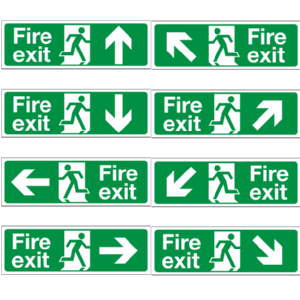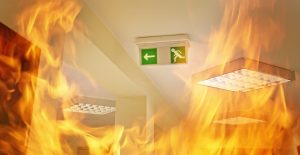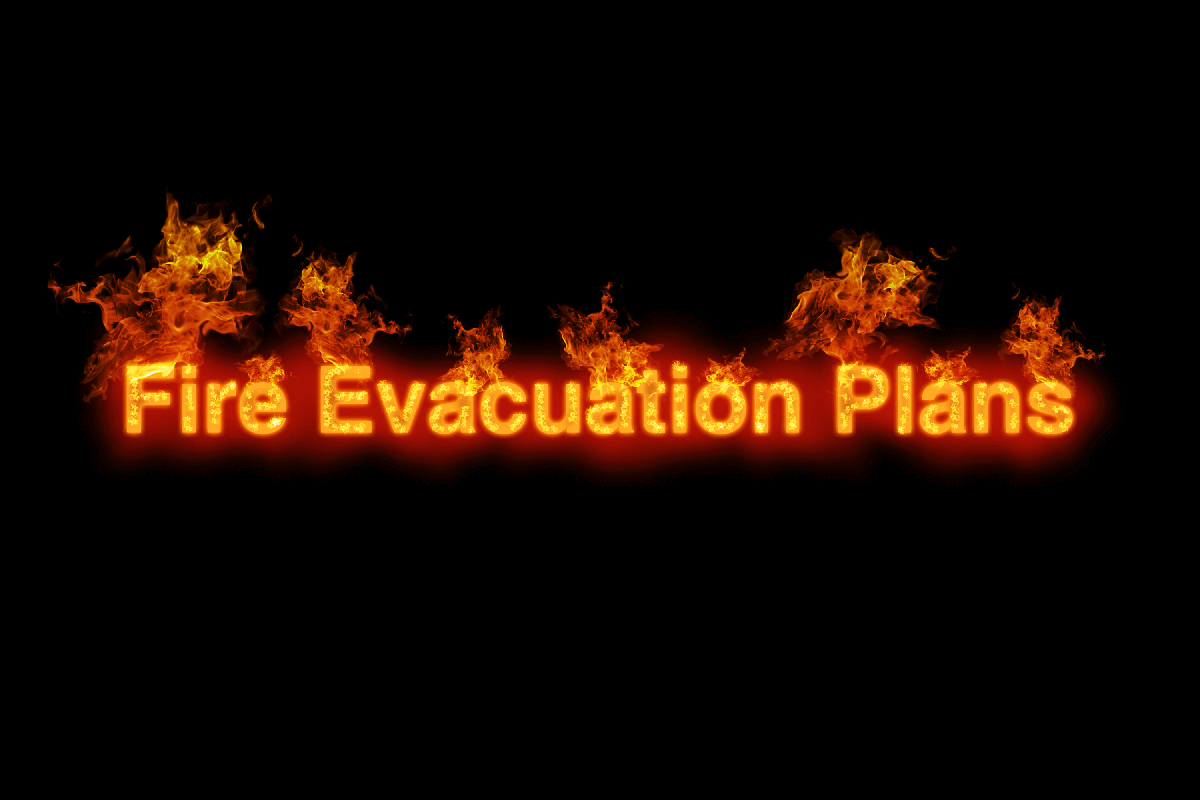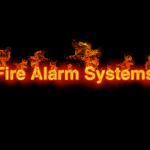For business owners, there is nothing more important in the workplace than ensuring the employees, staff and property are safe in the event of a fire. Unfortunately, safety is easily compromised if there is not a plan in place to ensure the fire doors are inspected as often as possible. There are laws in place that regulate these inspections, and those who fail to abide by these laws risk penalties and even imprisonment.
Fire door inspections are just one aspect of a comprehensive and definitive fire safety plan. Fire evacuation procedures should include clear instructions on the steps employees and staff should take if there is a fire alarm or if there is an actual fire.
It is the law that every company should have a formal fire evacuation plan in place that meets the requirements of Article 15.1(a) of the Fire Safety (Regulatory Reform) Order 2005. These plans are required to be in every business so that assigned employees understand their responsibilities and the actions they should take when there is a fire alarm or a fire.
Contents
What Is A Fire Emergency Evacuation Plan (FEEP)?
 A FEEP, fire emergency evacuation plan, is a document that includes information regarding fire safety. In this plan, there are outlined steps that detail the actions that should be taken by employees and/or staff members if there is a fire within the walls of the building. There is also information in this plan that explains how calls to the fire brigade should be handled.
A FEEP, fire emergency evacuation plan, is a document that includes information regarding fire safety. In this plan, there are outlined steps that detail the actions that should be taken by employees and/or staff members if there is a fire within the walls of the building. There is also information in this plan that explains how calls to the fire brigade should be handled.
There are two types of notices that must be included within a fire emergency evacuation plan. The first type of notice is a general fire notice. This type of notice is ideal for smaller businesses.
A general fire notice could be a single page that contains fire evacuation information. It is typically posted in areas where it can be readily viewed by employees and assigned staff members so they can become familiar with the information in the notice.
There is also a staff fire notice. This type of fire evacuation notice includes detailed fire safety information, and is typically geared towards larger buildings and buildings that have a higher fire risk.
A staff fire notice takes into account the results that are presented in a fire risk assessment and gives precise and detailed instructions on how staff and employees should proceed if there is a fire in the building.
What Are the Benefits of a Fire Evacuation Plan?
Assigned employees are provided with the latest information regarding the company’s fire safety and evacuation plan that contains clear instructions on the actions needed if there is a fire alarm or a fire. By understanding their roles within the plan and being presented with this information before disaster strikes, companies can ensure that the evacuation plan will be executed as designed to prevent the loss of life and property.
What Information Should Be Included In A Fire Evacuation Plan?
 Every business should have a detailed evacuation plan as part of its overall fire safety plan. The plan should be in writing and it should include the required actions that employees and staff members should take if there is a fire. Also, included in the evacuation plan should include information on how calls for fire and rescue services will be arranged.
Every business should have a detailed evacuation plan as part of its overall fire safety plan. The plan should be in writing and it should include the required actions that employees and staff members should take if there is a fire. Also, included in the evacuation plan should include information on how calls for fire and rescue services will be arranged.
The following points should be addressed in a fire evacuation safety plan:
- Evacuation protocol
- Who will be designated to call fire and rescue
- Where firefighting equipment is positioned throughout the building
- How building occupants will be alerted to the fire
- Where escape routes will lead evacuees
- Additional responsibilities for assigned personnel
- The provisions that are in place for employees and visitors with special needs
- The final assembly location for building evacuees
- Where specific isolation points are within the building
- The person who is responsible for shutting down machinery or removing equipment from the building
- What type of training is needed for the above mentioned points
No matter how basic or detailed the information is that you include in the fire evacuation safety plan, it should be written in a format that is easy to understand by all employees and staff members. For example, detail the procedures that someone will need to take if they visually see a fire versus the procedures that will need to be followed by someone who hears a fire alarm.
Always keep in mind that the evacuation plan should be a reflection of your company’s overall fire safety plan and fire strategy.
For buildings that have multiple floors, create a floor plan that details the escape routes. Include signs on the fire safety plan that will highlight where fire alarms, fire exits, firefighting equipment and assembly points are located throughout the building.
What Is A Personal Emergency Evacuation Plan (PEEP)?
A Personal Emergency Evacuation Plan (PEEP) is an escape plan to follow for any individual who may have difficulty exiting a building during an emergency.
According to UK legislation, it is the responsibility of an employer to enforce effective measures for the safe evacuation of employees in the event of an emergency. This is set out in the Disability Discrimination Act of 1995, the Management of Health and Safety at Work Regulations of 1999 and the Health and Safety at Work Act of 1974.
An effective PEEP should:
- Establish precise evacuation routes
- Specify staff duties
- Pinpoint locations for specialist equipment like an evac-chair
- Determine staff training needs
- Determine any adaptations needed for the building
- Establish precise evacuation plans and refuge zones
Which Individuals Require A Personal Emergency Evacuation Plan?
A PEEP is essential for any employee or building visitor that requires help to get out of a building in the event of an emergency. You may require a PEEP for people with:
- Visual impairment
- Cognitive impairment
- Impaired hearing
- Movement disorder
- A medical injury or condition that may limit their ability to evacuate safely
Different people have different needs and disabilities. Every case is unique, and not all people with an impairment or disability require an individual plan. All staff members that need a plan should be provided with one that fits their specific requirements.
What Information Should Be Included In A Personal Emergency Evacuation Plan?
There are various things that you need to consider when coming up with a plan. You should make the following considerations:
- Lifts
- Refuge areas and secure routes
- Help offered by others
- Equipment and training needs
- Multiple-occupancy premise
A Personal Emergency Evacuation Plan is essential in every building. It can safeguard the wellbeing of staff members and visitors during emergencies. Every employer must ensure that the workplace is a safe environment for all employees.
How Our Fire Evacuation Plans And Procedures Services Can Benefit Your Company
We are experienced and professional fire safety engineering consultants in fire evacuation. Our company will inspect your workplace and design a comprehensive fire evacuation plan to address the specific fire safety needs of your business. For example, we can include evacuation procedures for evacuating the elderly, young children and the disabled.
After we have assessed your worksite, our experienced fire consultants will hold a de-briefing with the assigned employees who are on the site and provide them with a complete report of what is discovered during the assessment. As mentioned, the report findings will be specific to your business and your business fire safety needs. It will also contain a pre-planned fire evacuation procedure that can be used if there is a fire. As always, we offer our clients continued expert advice and support.




